Some people love maintaining and cleaning their bikes, installing various after-market parts and keeping them in a pristine condition, all the time. I, on the other hand, just want to ride them, with as little maintenance as possible. Over the years, besides flat tires, chains have given me the most problems. Back when I just started riding, lubricating chain was one of the last things on my mind. Fast-forward a few hundred thousand miles and now I am almost anal about keeping my chain well oiled. My bike may be filthy and plastic pieces may be broken or completely missing, but my chain will be lubed.
At the end of a long day of riding, fiddling with the chain, especially on a bike without a center stand, is the last thing I want to do. Additionally, even when I start a day with perfectly lubed chain, after a few hours of riding, it will be dry and in need of lubrication. A system delivering oil onto a chain constantly, while riding, is the best solution.
There are quite a few options available for $100-500, from primitive, hand actuated to space-age, motion sensor and GPS enabled, oilers. However, being an engineer, I thought why spend a few hundred dollars when I can build it myself. Well, a few thousand dollars and many hours of effort later, I finally have an automatic oiler that does what I need.
At first, I just wanted chain lubed and looked for shortcuts. But shortcuts rarely work well. I started with a gravity fed oiler similar to some oilers on the market today. I soon realized that I better come up with some electronic version, but I didn't want a full-blown, motion sensing solution. But after wasting more time and money, I realized that I had to do the job right.
Version 1 - The Hack
I started with gravity-fed oiler, much like Scottoiler - just a plastic bottle with a hose dripping oil onto a chain. While it served me OK for several thousand miles, it lacked robustness in terms of the amount of oil dispensed - often too little or too much. More importantly, I would forget to shut the valve off when parked and there was a puddle of oil when I got back to the parked bike.
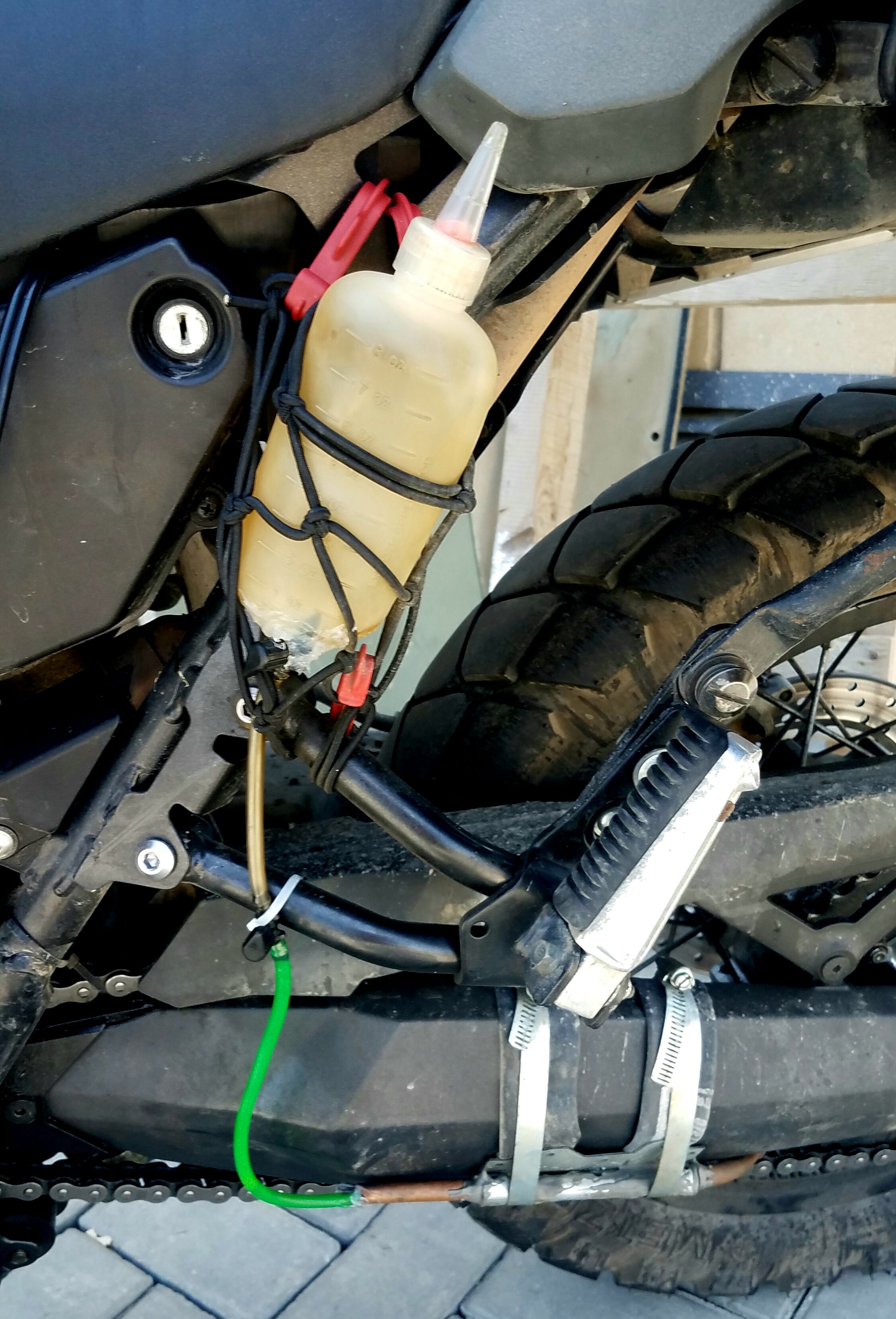
Primitive early version of the oiler kept chain lubed but left too many oil puddles behind during my Central Asia ride
Version 2 - A Simple Electronic Solution
Next was an electronics-controlled valve that would open every so often and close. It was active only while the ignition was on. So, forgetting to turn off the oiler when parked was less of an issue. I did not like this solution because it did not "know" whether bike was in motion or not. So it was quite possible for oil to be dispensed while the engine is running even though bike is stopped at a light or in a garage.
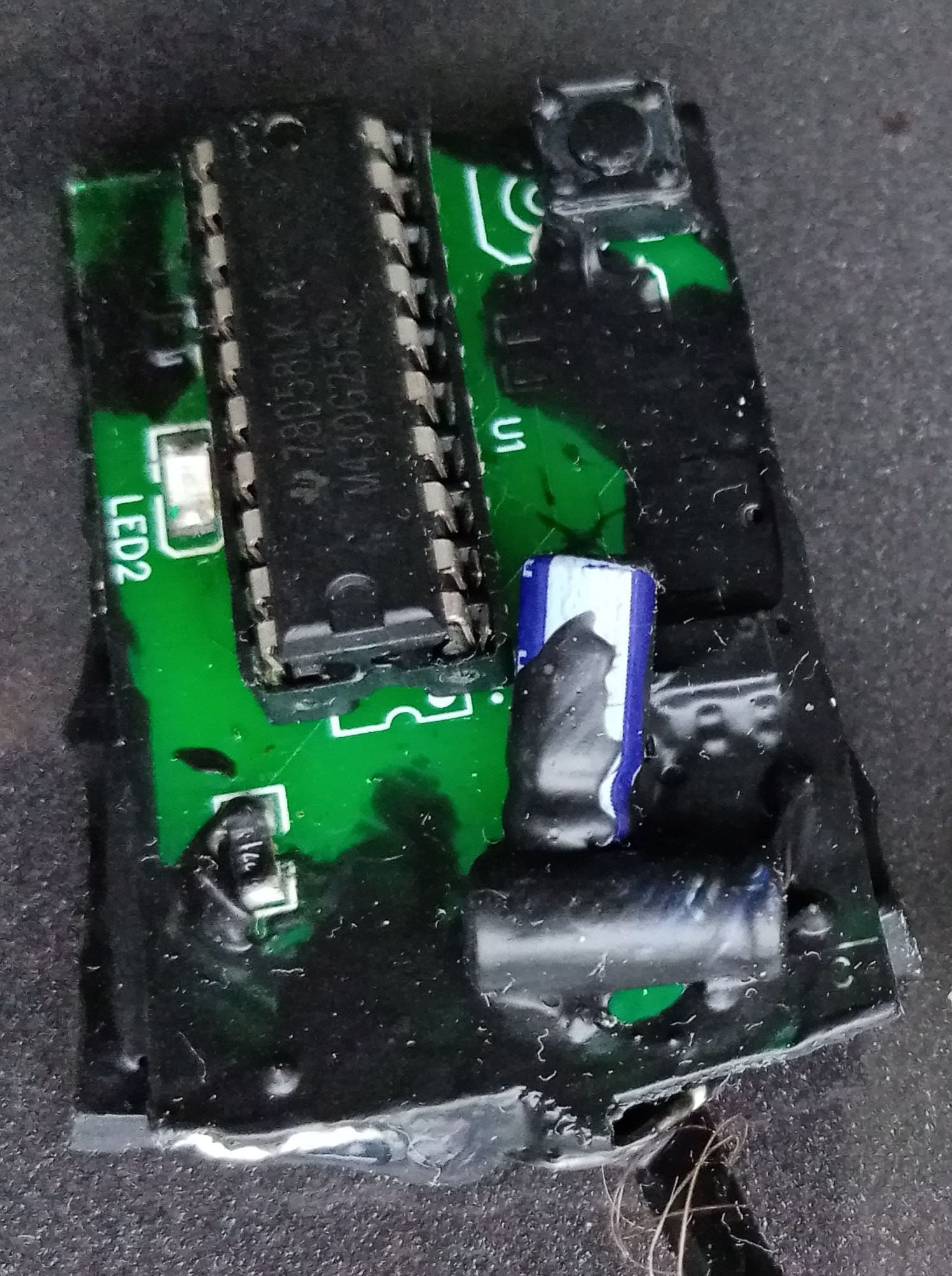
First oiler with microcontroller - worked well for a few thousand miles. Surges from irregular motorcycle voltage damaged the MCU. At least I learned that I had to use protection circuits. Current version of the oiler can withstand up to 40V of overvoltage. One of the high end, commecially available, oilers, died when the regulator on my bike malfunctioned and delivered 17V to the oiler circuitry.
Version 3 - Motion Sensor Solution with Bluetooth
Finally, I got tired of partial solutions and went for a full-blown motion-sensor solution. Micro-controller analyzes data from the motion sensor and makes decisions when and how much oil to dispense. When no motion is detected for a certain period of time, the oiler goes to sleep to save power. Low power consumption is important not only to save the environment, but not to drain the battery as well, if the bike is parked for an extended period of time and oiler is connected directly to the battery.
Additionally, for an easier user interface, a Bluetooth module was added, so that one can adjust oiler parameters (frequency and amount of oil dispensed) through a smart phone app.
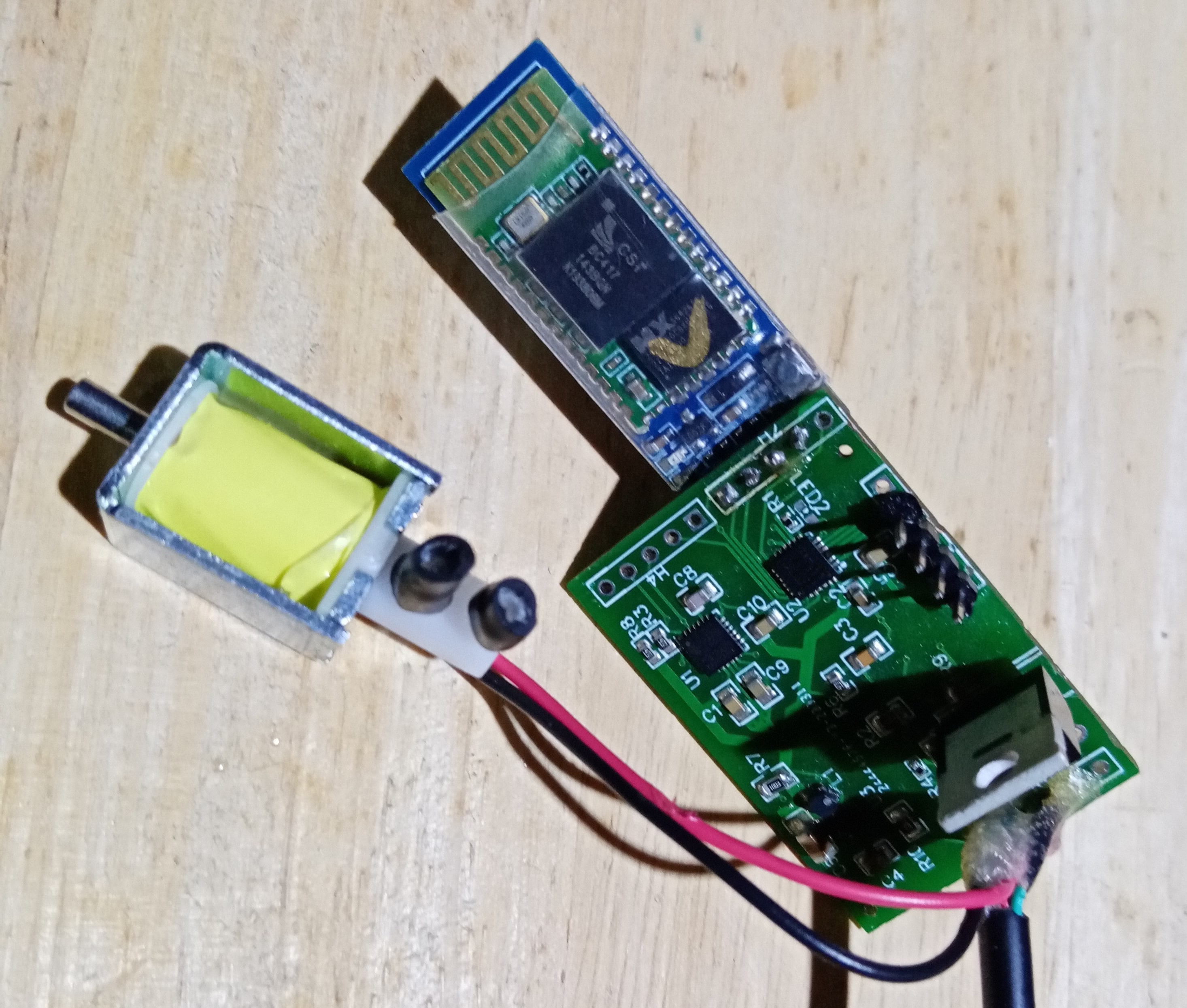
Oiler with motion sensor, Bluetooth and a more powerful microcontroller. Most of the motion detection algorithms were developed and fine tuned by analyzing data collected with this module and a laptop mounted on a little scooter in Thailand.

My office during Covid summer of 2020 while stuck in Thailand.
The solution with motion sensor worked well on motorcycles with good voltage regulators. On others, because of insufficient protection from overvoltage protection, it failed. So, the final version included better protection and a new voltage regulator. I also used smaller transistors to make the board more compact.
Version 4 - Solution With an On-Board Bluetooth Module

Next version had the latest and greatest of Bluetooth technology, smaller drivers, better voltage regulator and more ESD protection.
Bluetooth module was upgraded to Bluetooth Low Energy so as to reduce power consumption. Also, this module is significantly smaller than the one used earlier, so that the whole board is much smaller.
Total power consumption was reduced in both active and sleep modes. In sleep mode, the power consumption is below 2mW. This means that the system can run off a typical motorcycle battery for many months without draining it.
Version 5 - One Button, One LED Solution
While the Bluetooth interface enabled me to view the motion estimation in real time and to track various statistics (like how many drops were dispensed on the chain, how long I rode since last stop, etc), it was an overkill. Every time I wanted to just turn off oiler before going onto a dusty road or turn it on when back on pavement, I'd have to pull out my phone, connect bluetooth, fire up the app, press a bunch of buttons.... Too much work!
There is something to be said about simple solutions that just do the job without any bells and whistles. So, I decided to make another version of the oiler with one button and one LED as the interface. User interface is more complicated but most of the time, user just wants to turn the oiler ON/OFF or adjust amount of oil dispensed.

PCB with just one button and one LED for user interface.
Lessons Learned
Even with fully functional electronics, I discovered many problems while testing the oiler on my journeys through SW USA, Southern Africa , Europe and South America.
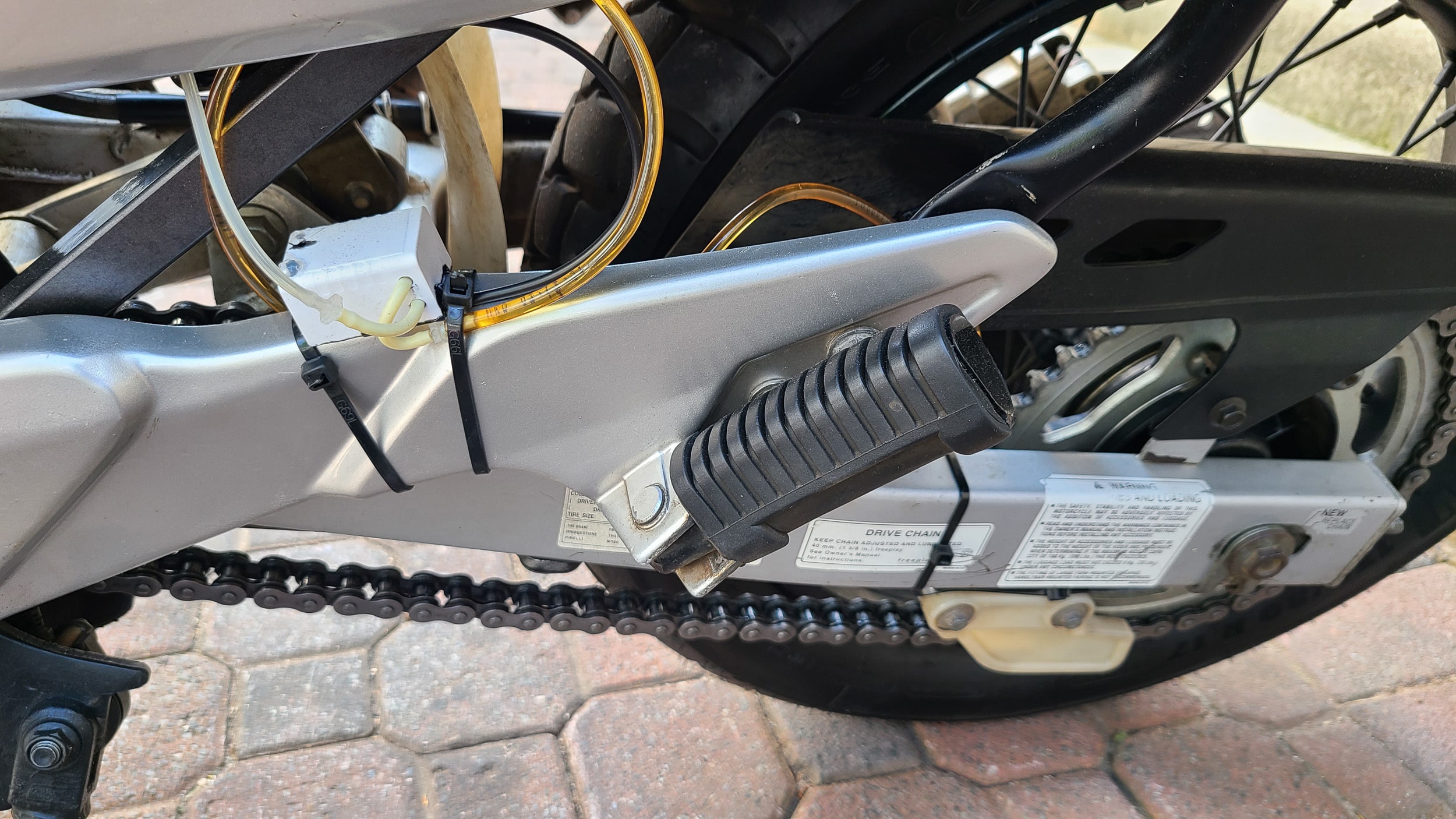
Fifth version of the oiler is without bells and whistles, no Bluetooth, no smart phone app, just one button and one LED. Here, it is mounted on a Honda Transalp, ready to be tested on rough African roads.
This solution was tested on a 20,000km ride around Southern Africa in 2022. It performed exactly the way it was expected to. It kept the chain lubed on paved and badly corrugated roads of Africa for three months. I could even turn the oiler on and off while riding.
Eventually pump died after an overzealous car wash attendant used high pressure nozzle all over the oiler housing and got the pump wet, which damaged it. Actually, after disassembling the pump, I discovered that it was just dust that got into the pump gears and required cleaning. After I cleaned the dust, pump worked again. Still, another useful lesson learned - housing needs better protection from the harsh environments.
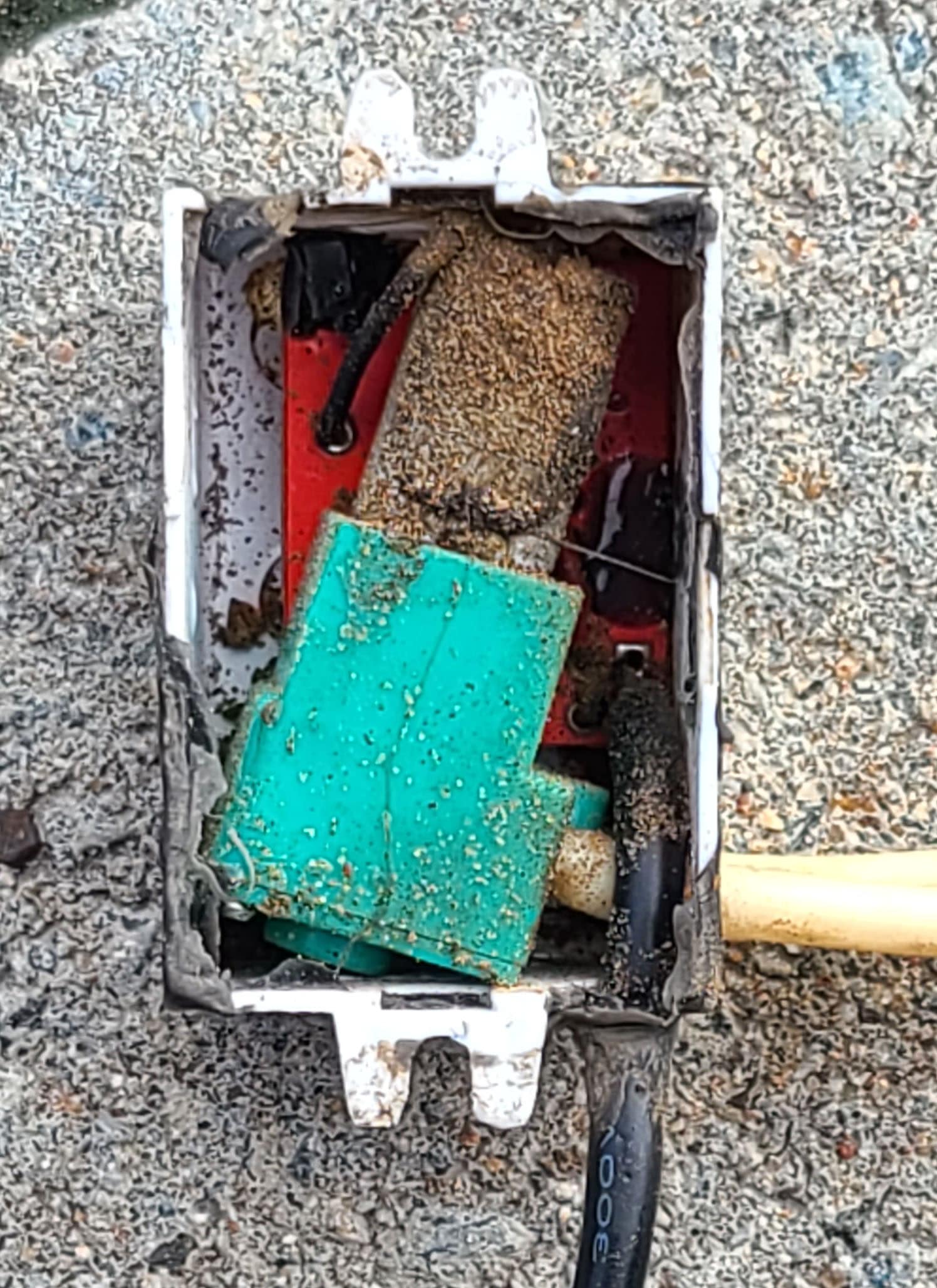
The pump was not properly protected from dust and water. After cleaning the gearing, pump worked again. Lesson learned - electronics and the pump need to be completely sealed from the moisture and dust.
After cleaning and repacking the pump with the same electronics, I used the oiler for the 32,000km ride around South America.
Oil Flow Control
Electronics is only a part of the solution. Physical control of when and how much lubricant is dispensed on the chain is just as important. Some of the currently available chain oilers on the market make use of gravity and control oil flow with a valve. One drawback is that type of lubricant used and ambient temperature will affect viscosity and flow speed, hence the amount of oil dispensed.
Early versions of this oiler were gravity-fed too. Eventually, despite the cost and size drawbacks, the solution with a pump was chosen. This way, hoses can be routed any way one desires without worrying about the lubricant "flowing up". More importantly, the amount of lubricant dispensed can be controlled much more precisely.

Various pumps that were tested with oilers. It was surprisingly hard to find small enough pumps for this application. Initially, all I could find were big pumps on the left side of the photo.
Oil Transfer Onto the Chain
Another, seemingly, trivial, yet very important problem to solve is that of delivering oil onto the chain. Where is the perfect place to dispense oil? After many thousands of miles of testing various places to dispense oil, rear sprocket emerged as the winner.
While for mostly dirt/gravel roads, front sprocket may be a good place to dispense oil, if one sticks to the paved roads, oil delivery onto the rear sprocket (and further transfer onto the chain due to the centrifugal force) is probably the best method. One only has to be careful about hose routing and mounting so as to protect it as much as possible from the flying rocks. When riding on the dirt roads, it's best to turn oiler off completely, unless one is using very specialized thin lubricants designed for dusty conditions.
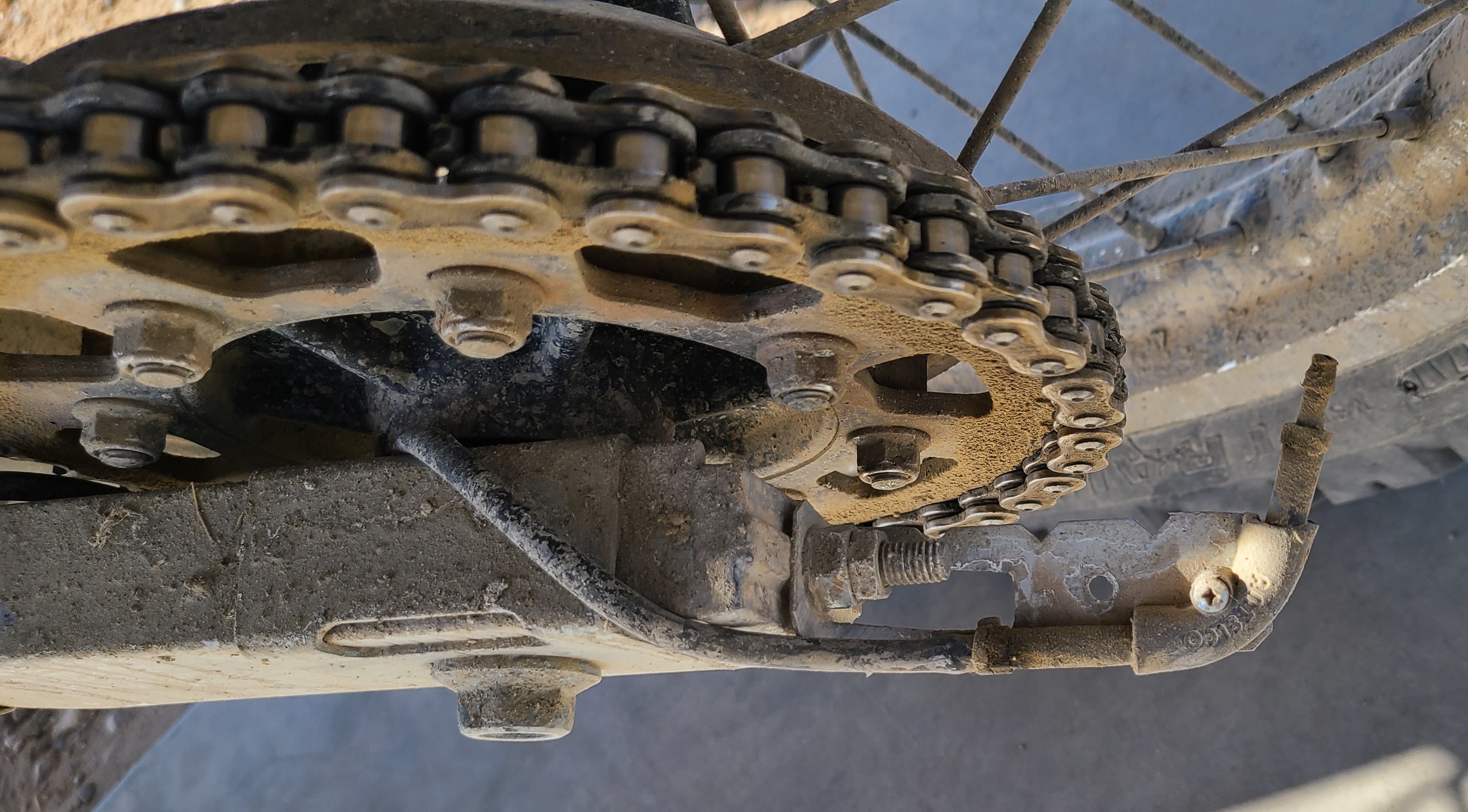
Bracket bent by flying rocks after going through a rock-filled dry wash in Southern Utah.
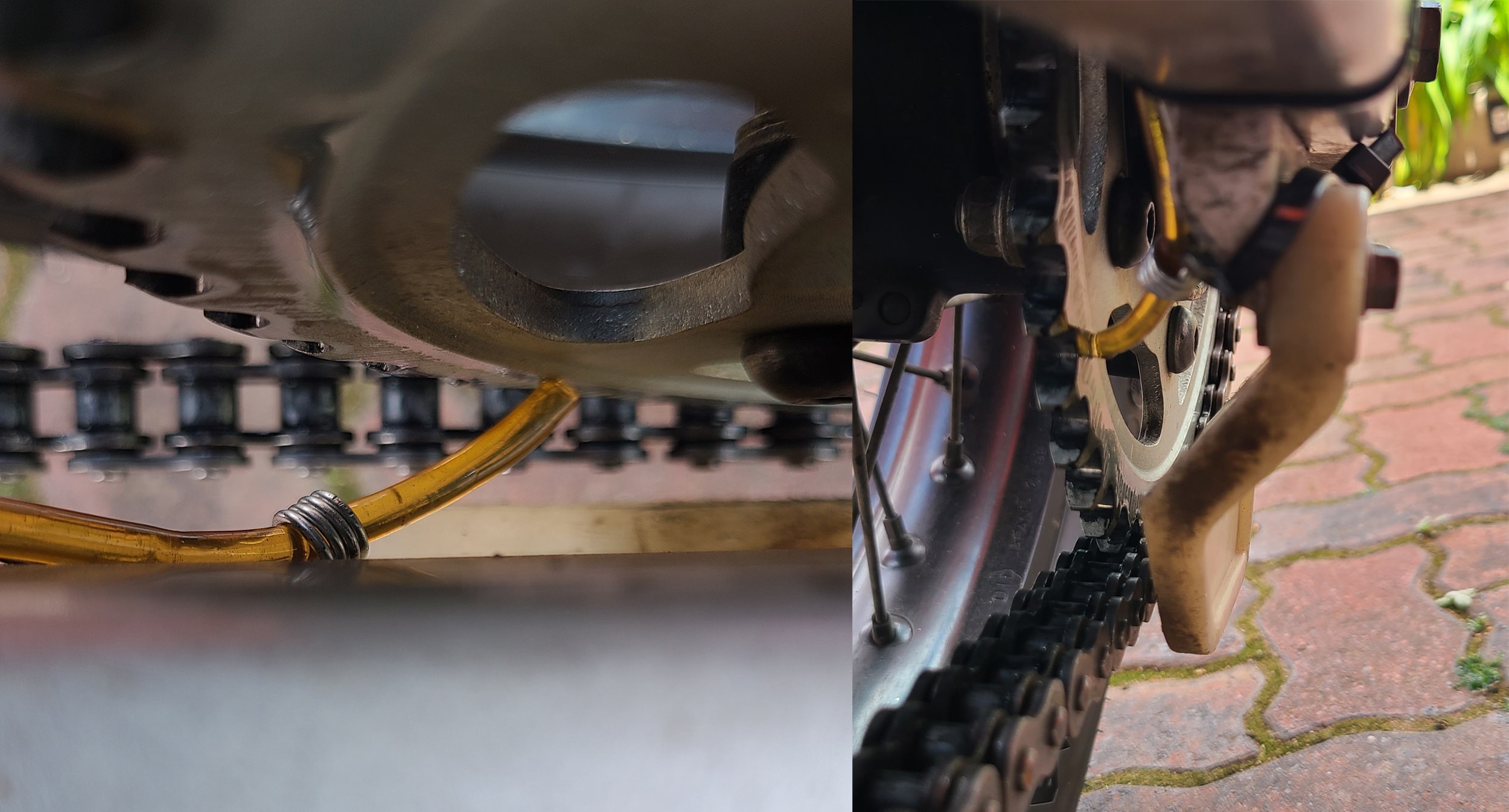
Even a stock chain guard will provide some protection for the nozzle/hose from flying rocks. Hose attached as shown above with just zip-ties lasted for 25,000km in Southern Africa.
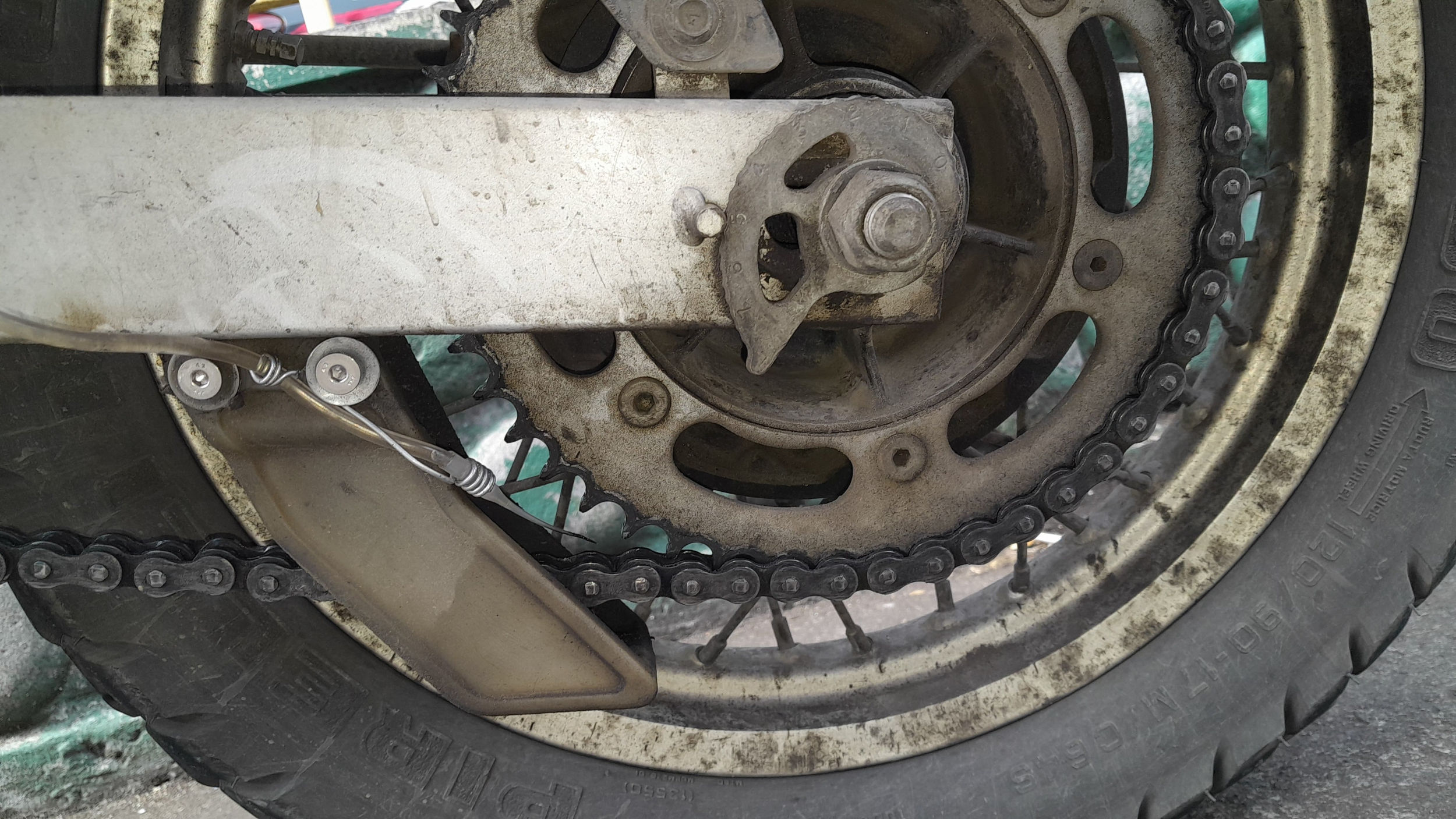
A steel wire used to hold the hose and a nozzle in place on a Suzuki DR650 during the South American trip.
